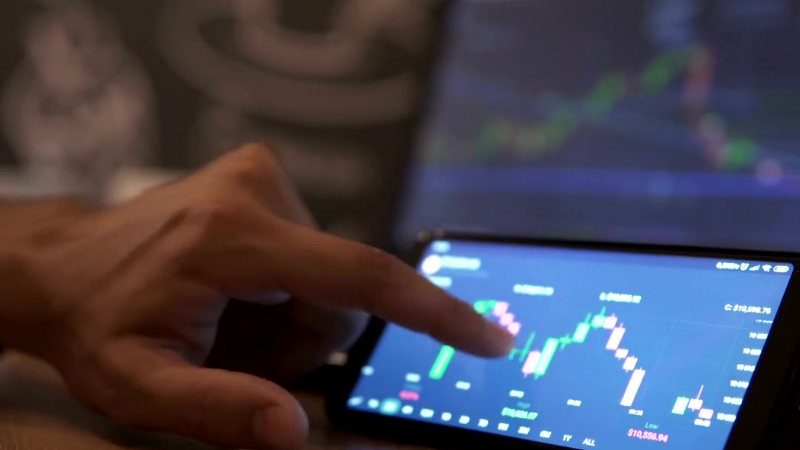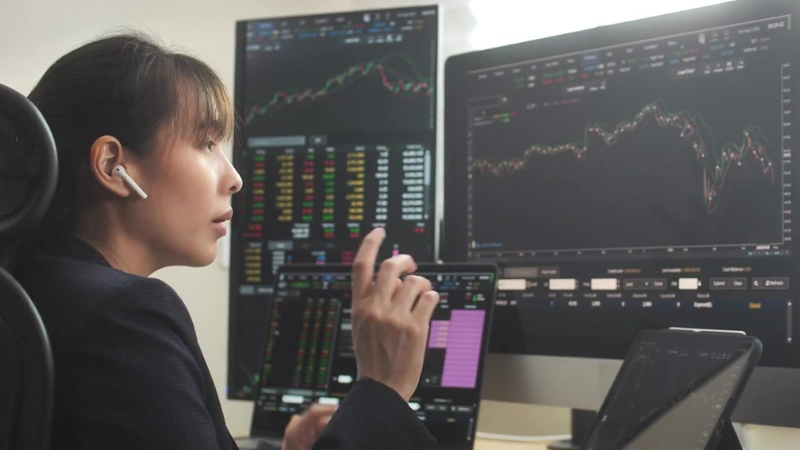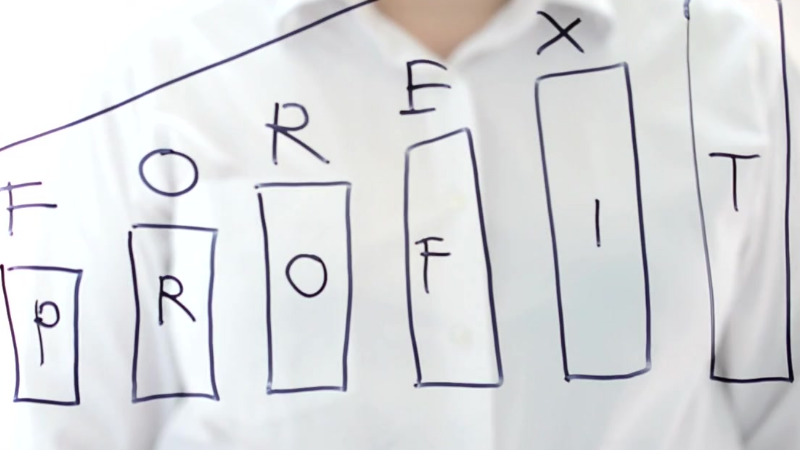Forex, or foreign exchange, is a global marketplace where currencies are traded against one another. Investors engage in Forex trading to profit from fluctuations in the value of currencies. The Forex market is the largest financial market in the world, conducting transactions worth trillions of dollars on a daily basis. Known for its 24-hour availability and high liquidity, it allows investors to trade at different times of the day.
Before starting in Forex trading, it’s vital to understand the basic terms and concepts. Familiarizing yourself with terms like pip, lot, margin, and leverage is the initial step towards becoming a successful Forex investor. Investors should also stay informed about daily economic news and developments in the global financial market. This knowledge can assist in predicting sudden changes in currency values and in devising effective trading strategies. Being cautious with initial trades and investing small amounts can help minimize risks.
Introduction to the Forex Market
The Forex market is a global financial market where currencies are traded against one another. It offers 24-hour trading access five days a week to investors worldwide.
What is a Forex Demo Account?
A Forex demo account is a simulation account loaded with virtual money, allowing investors to practice trading without risking real capital. It replicates real market conditions, enabling traders to test strategies and understand the market better.
Process of Opening a Real Account
To open a real Forex account, investors need to select a reliable broker and provide necessary identification documents. Once approved, traders can start trading by depositing the specified minimum deposit.
Types of Accounts
There are various account types in the Forex market, such as standard, mini, and micro accounts. Each account type varies in terms of deposit requirements and the benefits they offer.

Instruments Traded
Various instruments are traded on the Forex market, the most common of which are currency pairs. Other traded instruments include commodities, indices, and, at times, cryptocurrencies.
Categories of Currency Pairs
Currency pairs in Forex are categorized into majors, minors, and exotics. Majors are the most traded and include the world’s major currencies, while minors and exotics are less liquid and more volatile.
Types of Commodities
Commodities traded in the Forex market typically include precious metals, energy, and agricultural products. Precious metals like gold and silver are often used as safe havens during market volatility.
Global Indices
Global indices represent the value of selected stocks in the financial markets of specific countries or regions. These indices provide insights into the overall economic performance and health of the respective markets.

Trading Strategies
Trading strategies are plans implemented by traders to determine when to buy or sell currency pairs. Strategies are often based on technical analysis, fundamental analysis, or a combination of both.
Scalping Strategy
Scalping is a trading strategy designed to profit from small price changes in a currency pair. Traders who use this strategy make multiple trades per day, attempting to “scalp” a small profit from each.
Day Trading
Day trading involves buying and selling currency pairs within the same trading day with the goal of profiting from short-term price movements. Day traders capitalize on small price fluctuations and close all positions before the market closes.
Swing Trading
Swing trading is a style that aims to capture gains in a currency pair over a period of a few days to several weeks. It requires traders to hold positions for a longer duration compared to day trading, relying on both technical and fundamental analysis.
Positional Trading
Positional trading is a long-term strategy where traders hold positions for weeks, months, or even years. It’s heavily based on fundamental analysis, taking into consideration the broader economic factors affecting the currency pairs.
Economic Indicators
Economic indicators are vital statistics that indicate the economic health and stability of a country or region. They play a crucial role in influencing the value and volatility of currency pairs in the Forex market.
Interest Rates
Interest rates set by central banks, such as the Federal Reserve in the US, play a pivotal role in the valuation of a country’s currency. Higher interest rates typically attract foreign investors looking for the highest return on their investments, often leading to an appreciation of the country’s currency.
Inflation Rates
Inflation rates represent the rate at which the general level of prices for goods and services is rising, subsequently eroding purchasing power. Central banks closely monitor inflation rates, as they are a significant factor in determining monetary policy, affecting currency values.
Unemployment Rates
The unemployment rate is the percentage of the labor force that is jobless and actively seeking employment. It is a critical economic indicator as it signals the health of the labor market and, indirectly, the overall economy, thereby influencing currency values.

Technical Analysis Tools
Technical analysis tools are utilized by traders to forecast future price movements based on historical data. They offer insights into market trends and potential reversal points, assisting traders in making informed decisions.
Fibonacci Retracements
Fibonacci Retracements are used to identify potential reversal levels in the market by applying horizontal lines to a chart at key Fibonacci levels. Traders use these levels as potential support and resistance areas for price action.
RSI (Relative Strength Index)
The Relative Strength Index (RSI) is a momentum oscillator that measures the speed and change of price movements. It is commonly used to identify overbought or oversold conditions in a market, providing signals for potential reversals.
MACD (Moving Average Convergence Divergence)
The MACD is a trend-following momentum indicator that shows the relationship between two moving averages of a security’s price. Traders use the MACD to identify when bullish or bearish momentum is high, aiding in the decision of entry and exit points.
Bollinger Bands
Bollinger Bands consist of a middle band being an N-period simple moving average (SMA), an upper band at K times an N-period standard deviation above the middle band, and a lower band at K times an N-period standard deviation below the middle band. This tool is used to measure volatility and identify overbought or oversold market conditions.
Fundamental Analysis Concepts
Fundamental analysis involves evaluating the intrinsic value of a currency by examining related economic, financial, and other qualitative and quantitative factors. It provides a broad view of economic conditions and factors influencing a currency’s value.
GDP (Gross Domestic Product)
Gross Domestic Product (GDP) is a primary indicator of the economic health of a country, representing the total value of all goods and services produced over a specific time period. A growing GDP often strengthens a nation’s currency as it signals a robust economy, while a declining GDP can lead to depreciation.
Central Bank Decisions
Decisions made by central banks, such as adjusting interest rates and implementing monetary policy, have a significant impact on a country’s currency value. For instance, an increase in interest rates often attracts foreign investment, leading to currency appreciation, while a decrease might result in depreciation.
Political Events and Crises
Political events and crises can induce volatility in the Forex market, influencing currency value due to the uncertainty and economic instability they create. Traders need to monitor significant political developments closely as they can lead to abrupt and substantial currency movements.

Money Management
Money management in Forex trading refers to strategically deploying one’s capital to maximize profits while minimizing risks. Implementing effective money management can protect traders from significant losses and ensure sustainability in the volatile Forex market.
Drawdowns (Series of Losses)
Drawdown refers to the decline in account value after a series of losing trades, often measured as the percentage between the peak and the trough. Managing drawdown is crucial as it helps traders to understand the risk of their strategy and protect their capital during downturns.
Risk and Return Ratio
The risk-and-return ratio is a measure used by traders to compare the expected returns of an investment to the amount of risk undertaken to capture these returns. A favorable risk-and-return ratio is essential for long-term trading success, as it ensures that potential profits justify the risks involved.
Position Sizing Based on Volatility
Position sizing based on volatility involves adjusting the number of units bought or sold based on the current market volatility. This approach allows traders to maintain consistent risk levels across different market conditions, preventing overexposure during high volatility periods and increasing exposure during lower volatility.
Psychological Factors
Psychological factors significantly influence traders’ decisions in the Forex market, often driving them to act irrationally. Understanding and managing one’s psychological tendencies is crucial for maintaining consistent and successful trading behaviors.
Overconfidence
Overconfidence can lead traders to underestimate the risks involved in trading, often resulting in excessive trading or risking too much capital on a single trade. It’s vital for traders to remain humble and aware of the risks, ensuring that confidence doesn’t turn into recklessness.
Fear and Greed
Fear can cause traders to exit trades prematurely or avoid worthwhile opportunities, while greed can lead to risk-taking behaviors that endanger their capital. Balancing fear and greed is essential for making objective, rational trading decisions that align with one’s strategy and risk tolerance.
Patience and Discipline
Patience allows traders to wait for the right trading opportunities, while discipline helps them to stick to their trading plan without being swayed by emotions. Together, patience and discipline form the foundation of successful trading, helping to navigate through the uncertainties of the Forex market.
Legal and Regulatory Framework
The legal and regulatory framework in the Forex market is designed to protect traders and ensure fair trading practices. Different jurisdictions have various regulations, so traders should be aware of and understand the rules and policies that apply to them.
NFA & CFTC Licensing
The National Futures Association (NFA) and the Commodity Futures Trading Commission (CFTC) are regulatory bodies in the United States that oversee Forex brokers and ensure they adhere to strict standards for fair and transparent trading. Obtaining licenses from these organizations indicates a broker’s commitment to compliance and protection for traders.
Investor Compensation Fund
An Investor Compensation Fund aims to protect traders by providing compensation for eligible clients if a licensed Forex brokerage fails or becomes insolvent. The fund acts as a safety net for investors, though it’s essential to understand the specific terms and conditions, as these can vary between jurisdictions.
KYC (Know Your Customer) Policies
KYC policies are crucial for preventing illegal activities like money laundering and fraud within the Forex market. These policies require traders to provide personal and financial information to brokers, ensuring a secure and legally compliant trading environment for all parties involved.
FAQ
What is Forex trading?
Forex trading involves buying and selling currency pairs to profit from their price movements.
What is a currency pair?
A currency pair consists of two currencies, where one is bought and the other is sold.
What does ‘leverage’ mean in Forex?
Leverage allows traders to control larger positions with a small amount of capital.
How does a Forex broker work?
Brokers facilitate currency trades, providing a platform and access to the Forex market.
What is a pip in Forex trading?
A pip is a unit of measurement representing the change in value between two currencies.
What is a lot in Forex?
A lot represents a standardized quantity of a currency, often 100,000 units.
What are the Forex market hours?
The Forex market operates 24 hours a day during weekdays, closing on weekends.
How to analyze the Forex market?
Market analysis involves technical analysis, fundamental analysis, or a combination of both.
What is a spread in Forex?
Spread refers to the difference between the buying and selling price of a currency pair.
What is a demo account?
A demo account allows practicing trading with virtual money, mimicking real-market conditions.
What is margin trading?
Margin trading enables traders to open larger positions than their account balance.
How can I manage risk in Forex trading?
Implement risk management strategies like stop-loss orders and diversifying your portfolio.
Can I trade Forex on mobile?
Yes, many brokers offer mobile trading platforms or apps for Forex trading.
What impacts currency prices?
Currency prices are influenced by economic indicators, interest rates, and geopolitical events.
Is Forex trading taxable?
Taxation depends on your country’s tax laws; it’s essential to consult with a tax professional.
